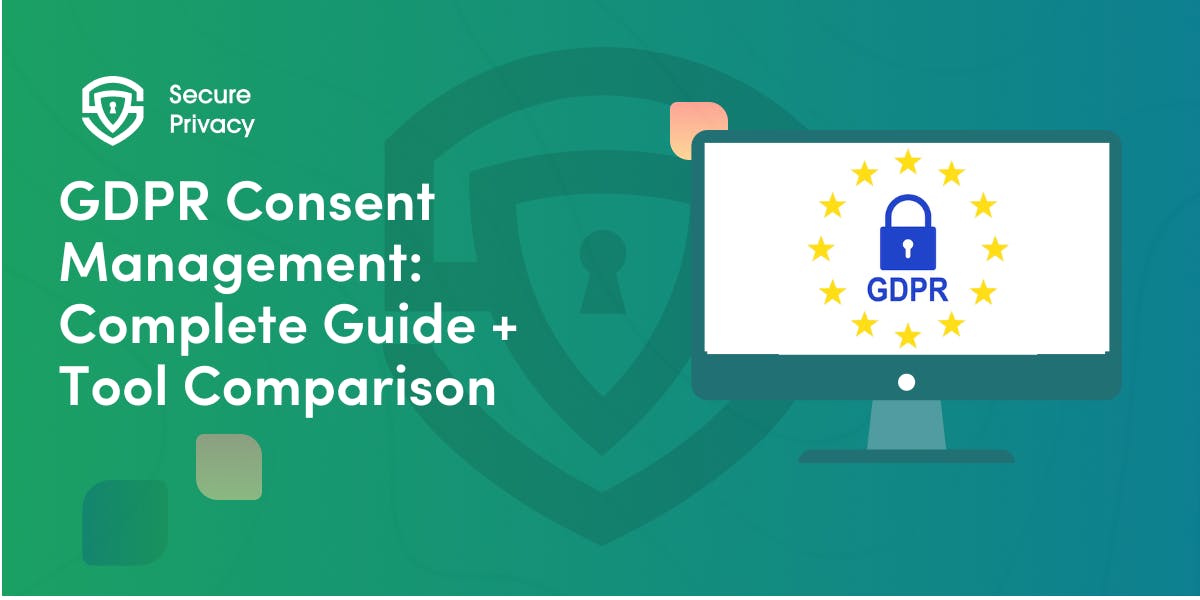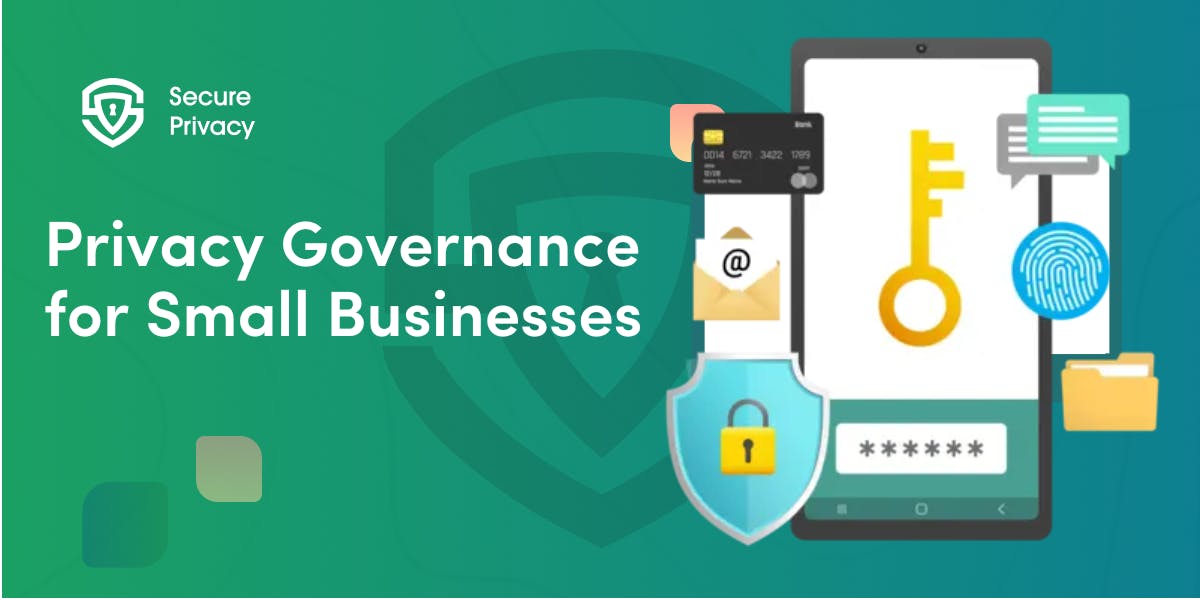Multi-Region Cookie Compliance Tool: Complete 2025 Guide
Your global expansion just hit a compliance roadblock. France's CNIL issued a warning about asymmetric consent buttons. California's Privacy Protection Agency flagged your "Do Not Sell" link placement. Brazil's ANPD questioned your data minimization practices. You need a multi-region cookie compliance tool that handles these jurisdictional differences automatically—before penalties escalate from warnings to six-figure fines.
Cookie compliance isn't one-size-fits-all. The EU demands opt-in consent with blocked cookies by default. California allows opt-out after processing begins. Brazil requires explicit consent with data minimization. India's new DPDP Act mandates multi-language consent in regional dialects. In this guide, you'll learn what multi-region cookie compliance tools do, which features matter most, and how leading platforms automate geo-targeted consent across GDPR, CCPA, LGPD, DPDP, and fifteen other frameworks.
What Is a Multi-Region Cookie Compliance Tool?
A multi-region cookie compliance tool automatically detects visitor location and displays the appropriate cookie consent banner with jurisdiction-specific requirements. European visitors see GDPR-compliant opt-in banners with pre-blocked cookies. California visitors get CCPA opt-out controls with "Do Not Sell" links. Brazilian users receive LGPD consent forms. Indian visitors encounter DPDP Act multi-language consent. All from the same codebase, managed through one dashboard.
Research analyzing global website compliance found 96-97% of sites contain at least one cookie consent violation. The primary cause: inconsistent implementation across regions. Sites often deploy GDPR-compliant banners globally, creating friction for jurisdictions like California where opt-out models are legally sufficient.
Geographic inconsistency creates three specific risks. Legal penalties differ by jurisdiction—GDPR fines reach €20 million or 4% of revenue while CCPA violations cost $2,500-$7,500 each. User experience suffers when Europeans encounter California-style opt-out banners. Competitive disadvantage emerges when rivals deploy sophisticated geo-targeted consent while your one-size-fits-all banner frustrates users.
Key Privacy Laws Affecting Cookie Compliance
EU & UK: GDPR and ePrivacy Directive
The General Data Protection Regulation creates the world's strictest cookie requirements. The core principle: opt-in consent is mandatory for all non-essential cookies. Cookies must be blocked until users actively consent.
Critical GDPR requirements:
Pre-consent blocking is absolute. Analytics, marketing, and advertising cookies cannot load until explicit consent. Equal visual prominence prevents dark patterns — "Accept All" and "Reject All" buttons must have identical visual weight. Granular control allows category-level choices. Consent logging documents when consent was obtained, what was consented to, and user device information.
France's CNIL issued €90 million in cookie consent fines in 2020-2021. Enforcement continues with regulators prioritizing cookie compliance audits.
USA: CCPA/CPRA and State Laws
California's framework uses opt-out rather than opt-in models. Cookies can load initially, but users must have clear mechanisms to opt out.
California requirements:
"Do Not Sell or Share My Personal Information" link must appear prominently. Opt-out preference signals like Global Privacy Control (GPC) must be honored automatically. Sensitive personal information gets enhanced protection under CPRA—precise geolocation, racial/ethnic origin, and health data require specific disclosure.
Sixteen U.S. states enacted privacy laws by 2025. Most follow California's opt-out approach with variations in thresholds, exemptions, and consumer rights.
Brazil: LGPD
Brazil's Lei Geral de Proteção de Dados combines European opt-in philosophy with local interpretation. The National Data Protection Authority (ANPD) emphasized data minimization in cookie guidance.
Explicit consent is required for non-essential cookies. Data minimization must be demonstrable. Portuguese language is mandatory for Brazilian users. ANPD enforcement ramped up significantly in 2024-2025 with active audits.
India: DPDP Act
India's Digital Personal Data Protection Act (2023) enforcement began in 2025-2026. The Ministry of Electronics released Business Requirements Documents in June 2025 specifying Consent Management System standards.
Explicit consent is mandatory for all personal data processing. Regional language support is critical—India recognizes twenty-two official languages, with consent available in languages commonly spoken in the user's region. Granular consent at the purpose level means users must understand specific processing activities. Verifiable consent mechanisms require technical capability to demonstrate when and how consent was obtained.
Additional Frameworks
Canada's PIPEDA requires meaningful consent for cookies. Australia's Privacy Act applies general consent principles to online tracking. APAC variations include Singapore's PDPA and Japan's APPI with evolving frameworks across Southeast Asia.
Why Multi-Region Compliance Is Challenging
Different consent models create conflicting requirements
European opt-in models require stopping all tracking until users actively agree. American opt-out models allow tracking with subsequent opt-out options. Brazilian requirements add data minimization emphasis. Indian regulations demand regional language support.
Language localization complexity
Translation complexity goes beyond word conversion. Legal terminology requires expert review—machine translation of privacy terms into Portuguese, Hindi, or Japanese often produces technically incorrect language. Sixty-plus languages for global coverage multiplies translation costs. German text typically runs 30% longer than English. Asian languages require different character sets.
Cross-domain consent synchronization
Complex website architectures with multiple domains create consent synchronization challenges. Chrome's third-party cookie phase-out (2025-2026) eliminates traditional mechanisms. Modern solutions use server-side APIs, first-party domain strategies, and query parameter approaches.
Keeping pace with regulatory changes
India's DPDP Act enforcement began in 2025. Eight new U.S. state laws took effect in 2025. The EU continues refining ePrivacy Directive interpretation. Multi-region tools provide regulatory intelligence teams monitoring global privacy developments and updating platform configurations automatically.
Essential Features of Multi-Region Cookie Compliance Tools
Geo-targeting and automatic banner adaptation
Core functionality detects visitor location through IP address geolocation and serves jurisdiction-appropriate consent banners. Advanced implementations use hybrid detection combining IP geolocation, browser geolocation APIs, and user input fallbacks. Banner adaptation extends beyond visibility to behavior—GDPR configurations block non-essential cookies pre-consent while CCPA configurations allow cookies to load.
Multi-language support with legal accuracy
Comprehensive language libraries supporting 40-60+ languages enable global operations. Translations must be legally reviewed by privacy experts fluent in both the target language and local privacy law. Dynamic language detection based on browser settings provides seamless experiences.
Automatic cookie scanning and categorization
Modern websites deploy 50-300+ cookies. Automated cookie scanning crawls your website regularly, identifies all cookies, categorizes them by purpose, and updates your consent banner. AI-powered classification achieves 93.7% accuracy, dramatically reducing manual review burden.
Consent logs and comprehensive audit trails
Regulatory audits demand proof of compliant consent collection. Audit trails must document timestamp, IP address and geolocation, device and browser information, consent banner version shown, and specific consents granted or refused. Tamper-proof logging prevents retroactive manipulation.
Integration with analytics and tag management
Google Tag Manager, Google Analytics, Facebook Pixel, and marketing technologies must respect consent choices. Multi-region tools integrate with these platforms to enforce cookie blocking pre-consent. Google Consent Mode v2 support is now essential.
Cross-domain and subdomain support
Enterprise implementations need consent synchronization across multiple properties. Single-script deployment with domain detection automatically applies appropriate configurations. Consent sharing mechanisms propagate user choices across domains without requiring repeated consent.
Best Multi-Region Cookie Compliance Tools (2025)
Secure Privacy: AI-Powered Multi-Region CMP
Best for: Growing SaaS, digital agencies, mid-market enterprises
Pricing: Free to $199/month (transparent tiers)
Coverage: 55+ privacy laws including GDPR, CCPA, LGPD, DPDP
Geo-targeting automatically detects location and serves appropriate banners. AI-powered cookie scanning achieves 93.7% accuracy. Multi-framework audit logging tracks consent under GDPR, CCPA, LGPD, and DPDP simultaneously. Google Consent Mode v2 native integration. Language support spans 40+ languages including India DPDP regional requirements. Implementation takes less than one day.
Differentiator: AI automation with transparent pricing (90%+ cost savings vs. enterprise platforms).
Osano: Enterprise Multi-Region Platform
Best for: Large enterprises, Fortune 500
Pricing: Custom enterprise ($5,000+/month)
Coverage: 95+ regulations across 50+ countries
Comprehensive regulatory coverage with dedicated legal intelligence teams. Patented cookie scanning technology. "No Fines, No Penalties" guarantee (up to $500,000). Customizable workflows for jurisdiction-specific consent flows. Vendor risk management extends beyond cookies to broader privacy program.
Differentiator: Most comprehensive regulatory coverage and enterprise-grade customization.
Usercentrics: Global Consent Orchestration
Best for: Mid-to-large European companies
Pricing: Custom (€1,000-€5,000/month)
Coverage: 60+ languages, major frameworks globally
Extensive template library with 2,200+ pre-configured legal templates. Google CMP partnership ensures deep integration. Design flexibility maintains brand consistency. Cross-device consent synchronization. Real-time compliance dashboard.
Differentiator: Strongest European pedigree with deep GDPR enforcement understanding.
CookieHub: Privacy-First Solution
Best for: Privacy-conscious companies, European SMBs
Pricing: Premium (€200-€1,000/month)
Coverage: GDPR, CCPA, LGPD focus
EU-based infrastructure keeps consent data within European jurisdictions. Geo-blocking options allow blocking specific regions. Region-specific analytics track consent rates by jurisdiction. Multiple domain management from single dashboard.
Differentiator: #1 G2 customer satisfaction (96/100).
OneTrust: Enterprise Privacy Platform
Best for: Global enterprises requiring comprehensive privacy management
Pricing: Custom enterprise ($10,000-$20,000+/month)
Coverage: Global coverage across all major frameworks
Privacy management platform extends beyond cookies to data mapping, DSAR automation, vendor risk, and privacy impact assessments. Regulatory intelligence from 2,000+ global privacy experts. Mobile SDK support. Marketing technology integration library connects with 1,000+ platforms.
Differentiator: Most comprehensive enterprise privacy platform.
Scanning websites across multiple jurisdictions requires accuracy and scale.
Implementation Strategy
Phase 1: Cookie Discovery
Automated scanning identifies all cookies across domains. Document cookie name, source, category, purpose, expiration, and third-party data sharing.
Phase 2: Region Mapping
List all regions where you have users. For each region, determine applicable privacy law, consent model, language requirements, and special considerations.
Phase 3: Banner Configuration
Configure region-specific workflows — Europe (opt-in, pre-blocked), California (opt-out, GPC), Brazil (explicit consent, Portuguese), India (multi-language, regional dialects).
Phase 4: Multi-Language Translation
Professional translation services with legal expert review. Localize concepts, not just words. Implement dynamic language detection.
Phase 5: Cross-Domain Deployment
Deploy consent management script across all domains. Configure cross-domain consent sharing. Test geo-targeting using VPN services.
Phase 6: Analytics Integration
Integrate with Google Tag Manager and marketing technologies. Configure Google Consent Mode v2. Test that tags respect consent choices.
Phase 7: Monitoring
Implement weekly cookie scans. Monitor consent rates by region. Track regulatory changes. Regular compliance audits quarterly.
Phase 8: Documentation
Maintain comprehensive documentation of cookie inventory, legal basis, region-specific configurations, consent rate metrics, and policy update history.
Future Trends
AI-driven optimization
Artificial intelligence improves geo-targeting accuracy by combining multiple detection methods. AI consent reconstruction can rebuild lost consent records with 97.3% accuracy. Predictive consent modeling optimizes banner design for each region.
Cross-border interoperability
Emerging frameworks explore consent portability allowing users to export preferences and import them to new services. Technical standards for consent representation enable interoperability.
Consent Mode evolution
Google Consent Mode v3 development focuses on broader vendor adoption and cross-browser standardization. Third-party cookie phase-out forces multi-region tools to evolve consent mechanisms for server-side tracking and Privacy Sandbox APIs.
Turn Complexity Into Competitive Advantage
Multi-region cookie compliance transforms from burden into business enabler when properly implemented. Enterprise customers require demonstration of sophisticated privacy practices. Privacy-conscious consumers prefer brands respecting regional preferences.
Start with comprehensive cookie discovery. Map your target regions and requirements. Choose multi-region CMP balancing features, pricing, and implementation speed. Configure region-specific workflows thoroughly, test exhaustively, and maintain ongoing monitoring.
The regulatory landscape continues fragmenting. Multi-region tools with regulatory intelligence and automatic updates protect against future changes without constant manual intervention. Your cookie compliance strategy reflects your brand values—sophisticated geo-targeting signals global sophistication and user-centric thinking.
FAQ
What is the best cookie consent tool for multi-region websites?
The best tool depends on organization size, budget, and requirements. Secure Privacy offers a strong balance of AI automation, transparent pricing, and rapid implementation for growing SaaS. Osano provides comprehensive enterprise coverage. Usercentrics excels for European companies. Evaluate based on regional coverage needs, language requirements, and budget.
How does geo-targeting work in cookie banners?
Geo-targeting uses IP address geolocation to detect visitor country, then serves jurisdiction-appropriate consent banners. Advanced implementations combine IP detection with browser geolocation APIs and user input fallbacks for accuracy when VPNs interfere.
Is GDPR consent valid for U.S. visitors?
GDPR consent exceeds U.S. legal minimums, so GDPR-compliant consent satisfies U.S. laws. However, forcing European opt-in on U.S. visitors creates unnecessary friction. Better approach: detect U.S. visitors and show opt-out banners.
How often should cookie scans be performed?
Weekly automated scans keep cookie inventories current for actively-developing websites. Monthly scans suffice for static sites. Scan immediately after deploying new marketing technologies or third-party integrations.
Can I use one cookie banner for all regions?
Technically yes, but this forces either European strictness everywhere (creating friction) or U.S. looseness everywhere (violating European law). Multi-region tools solve this by adapting behavior based on visitor location.
What happens if location detection fails?
Implement fallback mechanisms: default to strictest requirements (GDPR opt-in) when detection fails. Provide manual region selector. Leading platforms report 98%+ geo-detection accuracy with hybrid methods.
Do I need different privacy policies for each region?
Single comprehensive privacy policy covering all regions is most efficient. Use conditional sections displaying relevant information based on user location. Unified policies reduce maintenance burden.
How do tools handle India's DPDP Act language requirements?
Leading platforms added India support in 2025 with translations in Hindi, Tamil, Telugu, Bengali, and other regional languages. Implementation requires legal review by Indian privacy counsel ensuring terminology accuracy under DPDP.
Get Started For Free with the
#1 Cookie Consent Platform.
No credit card required

GDPR Consent Management: Complete Guide + Tool Comparison
Your website could be costing you €20 million. Every cookie that loads before user consent, every "accept all" button without an equally prominent reject option — these aren't minor oversights. They're violations that data protection authorities are actively hunting.
- Legal & News
- Data Protection

How to Design High-Performing Cookie Banners in 2026
“You're one click away from a €325 million fine”. That's what Google learned in September 2025 when French regulators hit them for cookie consent violations. The message is clear: cookie banner design in 2026 isn't about getting extra clicks anymore — it's about survival.
- Legal & News
- Data Protection

Privacy Governance for Small Businesses: Step-by-Step Guide
You're a 20-person company. A customer asks for their data. Your marketing team just added a new tracking pixel. Your CRM vendor updated their terms. And you just realized you might need to comply with GDPR, CCPA, or both.
- Legal & News
- Data Protection

